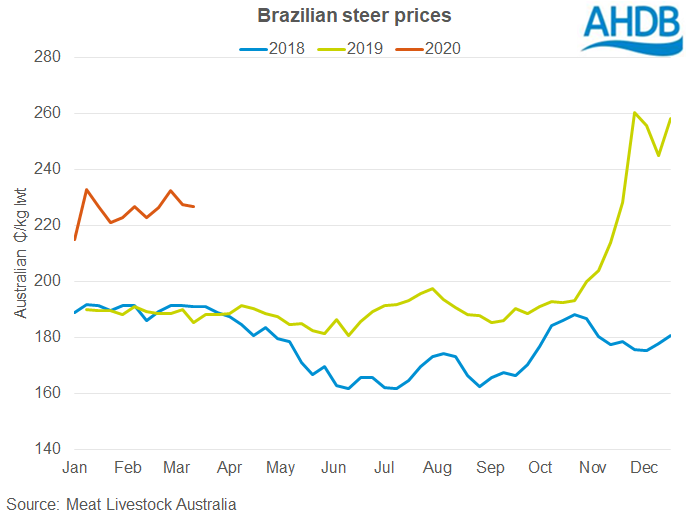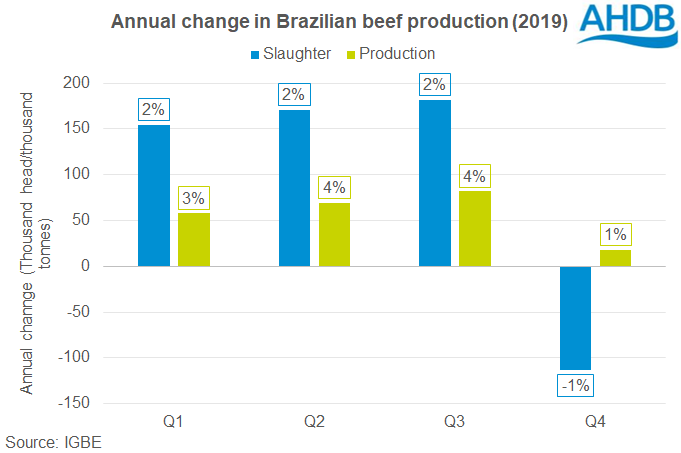Brazilian beef production slows as export markets tackle coronavirus
Wednesday, 1 April 2020
By Felicity Rusk
Brazil is the world's largest exporter of agricultural commodities. As such, Brazil’s capacity to deal with the coronavirus pandemic is a key watch point for many markets.
According to the latest report from Rabobank, the impact of coronavirus on the beef sector has been limited so far, as most cattle ranches are fairly remote with few employees. As such, raising awareness on the coronavirus and managing risks have been the main strategies. However, there are concerns about possible issues with feed supplies from some grain regions. Nevertheless, pasture was reported as abundant.
At a national level, disruption to food transportation has been fairly limited, with only a few isolated incident reports. Furthermore, ports are reportedly functioning as normal.
The turbulence seen in global markets as a result of the coronavirus pandemic is evident in Brazilian beef prices, which have lacked direction for much of the year. Nevertheless, prices have continued to track above both 2018 and 2019 levels.

Production growth slowed in Q4
Brazilian beef production in the final quarter of 2019 continued to track above the previous year 2.1 million tonnes. While production continued to track above the previous year (+1%), the growth is considerably smaller than seen earlier on in the year.

The drop off in growth was driven by a reduction in throughputs. In total, 8.1 million cattle were slaughtered in the final quarter of 2019, 1% less than in the same period in the previous year. However, carcase weight averaged 259kg, 5kg more than the previous year. This increase in carcase weights compensated somewhat for the reduction of throughputs.
Exports have slowed in 2020
China is Brazil’s top export destination for fresh and frozen beef. As such, Brazilian exports were particularly affected by the reduction in import demand as out-of-home consumption fell. In February, Brazil exported almost 38,000 tonnes of fresh and frozen beef to China. This is a 4% less than in the previous year, and almost 30% less than in the previous month.
However, China has starting to relax measures introduced to control the spread of the disease and so trading is expected to return to more ‘normal’ levels over the coming months.
Sign up for regular updates
You can subscribe to receive Beef and Lamb market news straight to your inbox. Simply fill in your contact details on our online form.
While AHDB seeks to ensure that the information contained on this webpage is accurate at the time of publication, no warranty is given in respect of the information and data provided. You are responsible for how you use the information. To the maximum extent permitted by law, AHDB accepts no liability for loss, damage or injury howsoever caused or suffered (including that caused by negligence) directly or indirectly in relation to the information or data provided in this publication.
All intellectual property rights in the information and data on this webpage belong to or are licensed by AHDB. You are authorised to use such information for your internal business purposes only and you must not provide this information to any other third parties, including further publication of the information, or for commercial gain in any way whatsoever without the prior written permission of AHDB for each third party disclosure, publication or commercial arrangement. For more information, please see our Terms of Use and Privacy Notice or contact the Director of Corporate Affairs at info@ahdb.org.uk © Agriculture and Horticulture Development Board. All rights reserved.

